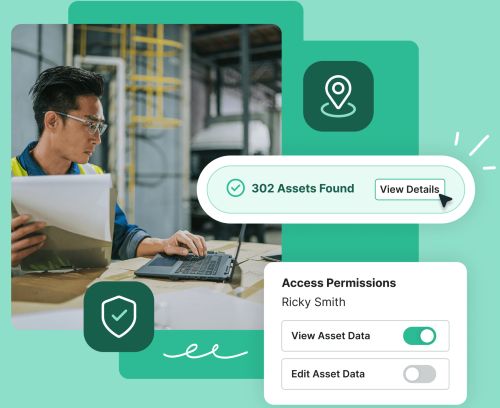

Today, asset tracking systems are seen as a must-have tool for organizations looking to keep resource management under control. They ensure assets are used properly, minimizing losses while enhancing productivity. In this article, we will discuss how these systems work and the advantages they provide for businesses.
The Basics of Asset Tracking
Asset tracking is the process of tracking and managing your physical assets with technology. These assets can include machinery, automobiles, or specialized equipment. Tracking systems allow you to keep tabs on the location and condition of your assets at all times. This feature allows for better asset utilization and a reduction in downtime.
Elements of an Asset Tracking Solution
An asset tracking system is made up of multiple elements that work together. The main ones are tags or labels, readers, and software platforms. Tags, which may be a barcode or RFID chip, are fixed directly on the asset. These tags are read by scanning devices, and the data is processed and analyzed by software platforms.
Tagging Methods
The tagging method depends on the asset type and requirements. Barcodes are a cost-effective option and are useful for products that don’t need to be tracked often. The advantage RFID chips have over barcode chips is that they can do more things. They can be scanned from a distance, can store more information, and are suitable for high-value assets.
Data Collection and Analysis
After attaching tags, data is captured by scanning devices that read them. This data is then relayed to the main software system. The software analyzes the data, after which you can find out where your assets are, how they are used, and what state they are in. This analysis enables organizations to strategize on where to allocate resources and how to schedule maintenance.
Real-Time Monitoring
The ability to monitor assets in real time is one of the major benefits of asset tracking systems. Assets and their statuses become visible to organizations in real time, which is critical for sectors where speed is key for making decisions. Asset tracking systems reduce delay and ensure resources are available as and when needed.
Integration with Other Systems
Asset tracking systems can be integrated with other business systems, such as inventory management or maintenance software. This integration makes it easier to operate your platform in the same environment and move data across the platforms smoothly. Getting an overview of asset usage and needs allows you to combine data across systems to improve overall operational efficiency.
Benefits of Implementing Asset Tracking
There are many benefits of using an asset tracking system. First, it provides accurate location data, minimizing the possibility of asset loss or theft. Second, it maximizes asset utilization and reduces the chances of resources being wasted. Third, it facilitates maintenance management by providing timely alerts regarding servicing requirements.
Enhanced Accountability and Transparency
Using asset tracking systems promotes accountability in organizations. When employees know that their utilization of assets is being monitored, they are more likely to use them responsibly. This creates a culture of accountability, which makes for efficient resource utilization and reduces wastage.
Cost Savings and Increased Efficiency
Tracking systems boost savings by minimizing asset loss and increasing utilization rates. Companies can allocate their resources better, avoiding needless purchases or rentals. Moreover, proper delivery management ultimately translates into higher operational efficiency and productivity.
Challenges and Considerations
Asset tracking systems have many benefits, but they also present some challenges that organizations need to consider. It can be expensive to implement this system, especially for complex use cases. Organizations also need to make sure that their workforce is trained enough to use the technology efficiently.
Choosing the Right System
To select the right asset tracking system for your business, you need to consider several factors. Organizations must evaluate their requirements, asset types, and budget. Consulting with experts can help you identify the best asset tracking system for your needs.
Conclusion
Asset tracking systems provide an efficient method for tracking equipment. They allow businesses to make data-driven decisions to become more efficient and save costs. With technology continuing to advance, these systems will become even more important components of asset management strategies.


